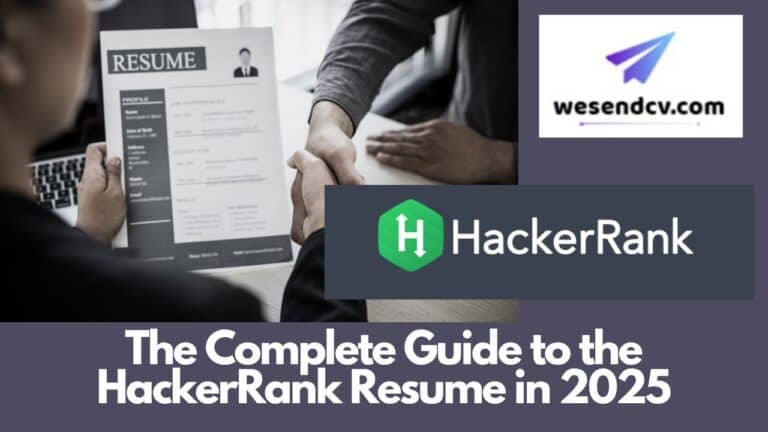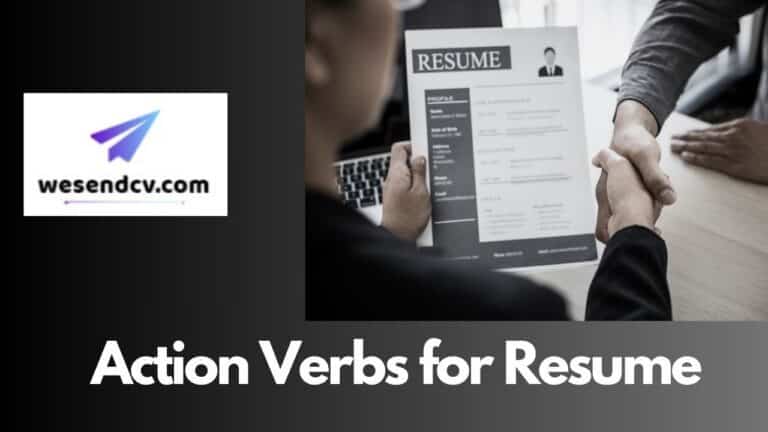The world of resumes continues to evolve, and with 2025 on the horizon, job seekers need to stay up-to-date with the latest trends to make sure their applications stand out. The days of using the same generic resume format for every job are long gone. Different industries require different approaches, and what works for a tech job may not be suitable for a creative role or one in healthcare.
So, which resume style should you use for your industry? Let’s dive into the top resume formats for 2025 and which industries they suit best.
Main Highlights of Content
Toggle1. Chronological Resume
What Is It?
A chronological resume is the most traditional and widely recognized format. It lists your work experience in reverse-chronological order, starting with your most recent position and working backward. This format highlights your career progression and is ideal for those with a strong, continuous work history.
Best For:
- Corporate Roles: Finance, Accounting, Administration
- Engineering & Manufacturing: Employers in these fields prefer a clear timeline of your roles and responsibilities.
- Healthcare: Positions like nurses, doctors, and allied health professionals often value continuous work history.
Why It Works:
This format is favored by recruiters who want to see career growth and stability. It’s ideal for those who have steadily climbed the ranks and want to showcase long-term commitments to their roles.
Example:
For a finance role, this format allows you to display your growth from an entry-level analyst to a senior financial advisor, emphasizing the progression of responsibility.
2. Functional Resume
What Is It?
The functional resume focuses on skills and accomplishments rather than work history. Instead of listing jobs chronologically, it groups your experiences under relevant skill categories, like “Project Management,” “Team Leadership,” or “Client Relations.”
Best For:
- Creative Industries: Graphic Design, Writing, Marketing
- IT & Tech Roles: Especially for software developers, UX/UI designers, and data analysts where technical skills are prioritized.
- Freelancers & Career Changers: Those with gaps in employment or varied work experiences benefit from this format.
Why It Works:
Functional resumes are perfect for highlighting skills that directly relate to the job, regardless of where you developed them. This is especially useful if you’re transitioning into a new career and want to focus more on transferable skills rather than past job titles.
Example:
For a graphic design role, you could create categories like “Graphic Design Software Expertise” or “Creative Project Management,” under which you list your most significant achievements.
3. Combination Resume
What Is It?
As the name suggests, a combination resume is a hybrid between chronological and functional formats. It emphasizes your skills but also includes a chronological work history. You start by outlining your key skills and achievements, then move on to list your work experience in reverse order.
Best For:
- Tech Jobs: Cybersecurity, Software Development, Data Science
- Senior-Level Management: This format highlights both leadership skills and work history.
- Project-Based Roles: Perfect for industries like consulting and event management where skills and project outcomes are crucial.
Why It Works:
A combination resume offers the best of both worlds: you get to showcase your strongest skills upfront while still offering a timeline of your career. This makes it ideal for those who have gained valuable experience in varied roles and want to show both skills and growth.
Example:
For a senior tech role, you could start with a section on “Key Achievements in AI Development,” followed by a reverse-chronological list of jobs you’ve held in tech companies, highlighting each role’s impact.
4. Targeted Resume
What Is It?
A targeted resume is customized for each job you apply for. Every element of your resume—skills, experience, and achievements—are specifically tailored to the job description provided by the employer. This resume requires more time and effort to create, but it ensures that everything on the page is directly relevant to the position.
Best For:
- Sales & Marketing: Where tailoring your approach for each company shows your understanding of their needs.
- Consulting & Client Services: Businesses appreciate candidates who can focus on specific needs of the company.
- Highly Competitive Roles: For job sectors with tough competition, like fashion or entertainment, customization is key to getting noticed.
Why It Works:
Employers are more likely to notice a resume that directly responds to their job listing. By tailoring your resume, you demonstrate that you’ve researched the company and understand the role.
Example:
For a marketing role, you could highlight specific campaigns you’ve worked on that align with the company’s focus, such as a social media strategy for a similar brand or industry.
5. Creative Resume
What Is It?
Creative resumes stand out visually. They incorporate design elements such as infographics, charts, or unique layouts to make the content pop. This format is not focused on traditional presentation but on showing your personality and creativity.
Best For:
- Creative Fields: Advertising, Graphic Design, Copywriting
- Media & Arts: Especially suited for roles where creativity and design are valued, like film, photography, and content creation.
- Startups: Fast-paced, innovative environments where thinking outside the box is appreciated.
Why It Works:
A creative resume lets you showcase your skills in design and innovation right from the first glance. It’s more than just listing skills; it’s showing the employer your creative abilities in action.
Example:
For a graphic design position, you might integrate colorful graphics, icons, or even a portfolio of your work into the resume itself.
6. Mini Resume
What Is It?
A mini resume is a brief, one-page document that focuses only on the most critical highlights of your career. It often includes a summary of your resume skills, a brief outline of your experience, and notable achievements.
Best For:
- Networking Events: Where you need a concise document to quickly share with potential employers or connections.
- Freelancers & Contractors: When you want to provide a quick overview of your expertise without overwhelming details.
- Executive-Level Roles: Higher-level professionals who want to emphasize only key achievements and core competencies.
Why It Works:
For fast-paced networking or initial meetings, a mini resume cuts to the chase. It provides enough information to spark interest, allowing for deeper discussions later on.
Example:
At a tech conference, handing out a mini resume that highlights your proficiency in software development, AI technologies, and key projects ensures that potential employers get an immediate snapshot of your abilities.
Choosing the Right Format for Your Industry
Your resume format needs to match not just your personal experience, but also the expectations of your industry. Let’s break down which formats work best for specific industries in 2025.
1. Tech & IT: Combination or Functional
- Why: Tech recruiters want to see both technical skills and relevant experience. A combination or functional resume lets you showcase your proficiency in specific tools or programming languages, while still highlighting the companies you’ve worked for and the results you achieved.
2. Healthcare: Chronological
- Why: Stability and a clear career path matter in healthcare. Employers are often looking for a consistent track record of patient care, making a chronological resume the go-to format for doctors, nurses, and allied health professionals.
3. Creative Industries: Functional or Creative
- Why: These industries focus on skills and creativity, so you’ll want to let your expertise shine. A functional resume works well to categorize your achievements by skill, while a creative resume lets your design skills speak for themselves.
4. Sales & Marketing: Targeted
- Why: Sales and marketing positions require you to demonstrate how you can drive results for a specific company. A targeted resume tailored to each role shows employers you’re ready to meet their needs.
5. Engineering & Manufacturing: Chronological
- Why: In these fields, employers value experience, stability, and progression. A chronological resume highlights your work history and career growth, demonstrating that you’ve gained the necessary skills over time.
Bonus Tips for 2025 Resumes
- Keep It Concise: Resumes should still aim for one to two pages max, even as expectations evolve.
- Highlight Achievements, Not Duties: Employers care about what you’ve accomplished, not just what you were responsible for.
- ATS-Optimized Formats: If your industry uses ATS, make sure your resume is simple enough to be parsed correctly, with proper keywords.
- Tailor for Each Job: Don’t send out the same resume for every job. Customize the content to fit the job description as closely as possible.
- Tools To Use: Resume Data Visualization, Achievement Generator, Interview Preparation Checklist Tool and Job Salary Comparator 2025.
Final Thoughts
Picking the right resume format for your industry in 2025 can make or break your job application. Whether you’re applying for a tech role, a creative job, or a healthcare position, aligning your resume style with industry expectations will give you a major advantage.
Want help crafting your perfect resume? Visit WesendCV.com to get expert guidance and make sure your resume is tailored for success in your field.
For more tools, check out our Resume Formatting Tool, and ensure your resume stands out in today’s competitive job market.







